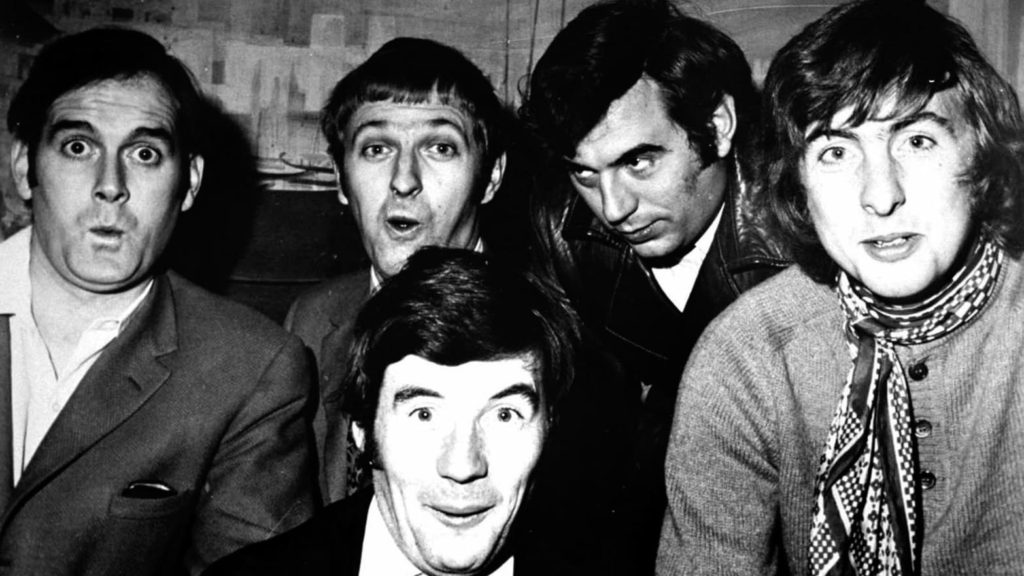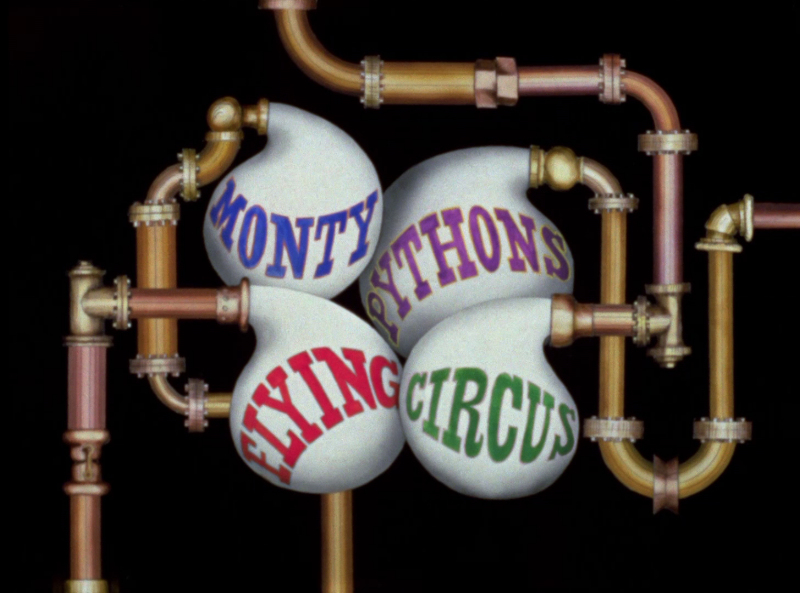
Last November Network in the U.K. released their sparkling new restoration of the landmark series Monty Python’s Flying Circus (1969-1974) to mark its 50th anniversary. All four series are available in Network’s region-free box set, “The Norwegian Blu-Ray Edition” (get it?), with individual series being released one at a time over a period of months.* It’s hard to believe that it’s been 20 years since A&E released the show on DVD – the last physical media release of Flying Circus here in the States, apart from some repackaged versions of the same over the years – and the discs haven’t aged terribly well, forcing you to sit through long menus, offering unsubstantial supplements, including some censored skits when uncensored versions were available, and looking like, well, DVDs encoded back in 1999. Network treats the show the way it should have been treated in the first place, offering a cleaned-up presentation taken from the original 2-inch videotape masters and going back to the original 16mm negatives and prints for the location-filmed sketches. Forget the version currently on Netflix. This is the best possible way to watch the series that gave us dead parrots, silly walks, Spiny Norman, an unexpected Spanish Inquisition, and the exploding version of the Blue Danube.
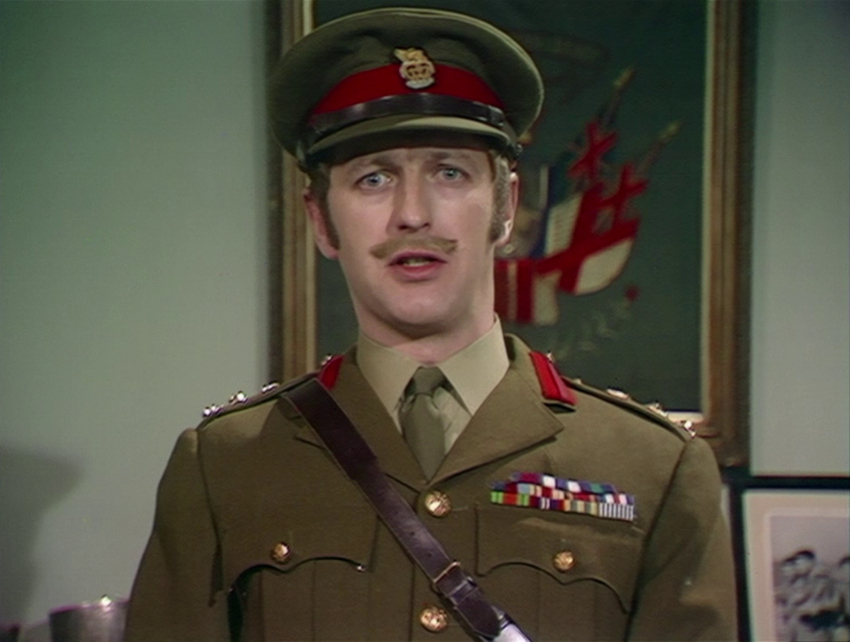
Graham Chapman
Really, it’s amazing how great this series now looks, given its origins. Network has also restored the episodes using as their guide how the content was originally broadcast – David Frost’s telephone number now appears where the Pythons impishly inserted it; Graham Chapman’s Summarize Proust contestant again has hobbies of both strangling animals and masturbation; and that spot is cancer, not “gangrene” – while uncovering additional deleted material and outtakes which are available to view in the special features. Personally, I was thrilled to finally see a bit of animation cut from rebroadcasts of the “Crackpot Religions” sketch, in which a series of Christs on the cross are strung together to become a line of telephone poles. Not everything that was filmed could be found; Python fans will be kept waiting for lost sketches involving a sculptor carving a long-nosed statue for his frustrated client (reportedly ruined by an alcoholic Chapman, struggling to remember his lines), and a wine tasting in which all the wines are just “wee-wee” (which John Cleese notoriously asked the BBC to remove before it was broadcast). But even the most diehard Python fan will discover material here they never knew existed. For me, that was a trio of short films the Pythons created for the employees of Birds Eye vegetables, Harmony Hairspray, and Close-Up Toothpaste to promote product relaunches. Taken together, those industrial films have about as much original Python content as one of their German episodes. (Speaking of which, those two German episodes are conspicuously not included, along with a few other choice items like the Montreux special – it’s a shame, but it’s heavily rumored these will be part of a separate release coming soon.)
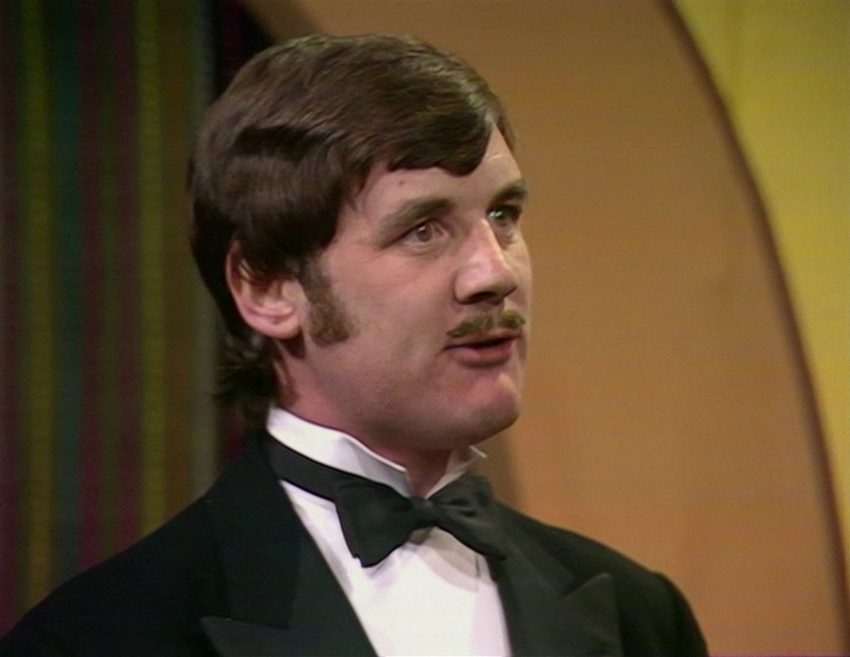
Michael Palin
The studio outtakes are also a small treasure trove for Python fans; though some clips are mundane, and quite a bit are missing audio (subtitles are provided), I was delighted by candid moments like the studio crew extracting a giggling Eric Idle from beneath a gigantic 16-ton weight prop, or take after take of a sketch in which Cleese and Michael Palin are discovered in bed together, Palin accidentally mooning the camera at one point. A student film called “And Now For Something Completely Different” (not the Python feature) is also great fun, interviewing the Pythons on location while they’re dressed in full-body casts for a sketch about a sadistic hospital. And more interesting moments have been recovered from the dust bin – in an incomplete and fairly tattered videotape of an interview on In Vision from December 1974, Chapman, Terry Jones, and Terry Gilliam are asked what filming the new series (their fourth, shortest, and last) was like since Cleese had decided not to participate in it. Jones gives a sly grin and says that it’s much easier, before Gilliam dives in and speaks more diplomatically about Cleese’s absence. It’s a surprising public admission: you can see the glee on Jones’ face that he gets to create a Python series without Cleese arguing over his material. Cleese loved getting a rise out of Jones, but these two stubborn forces also kept Python in balance – between Jones’ surrealist, slapstick sensibilities and Cleese’s character-based humor. With Jones now left to dominate the writer’s room, Idle – always stranded in the middle and usually writing by himself – found himself at a disadvantage and soon objected to carrying on with the series. The future of the troupe was to be in collaborating with Cleese and in arenas in which he was more interested: particularly in making Python films.
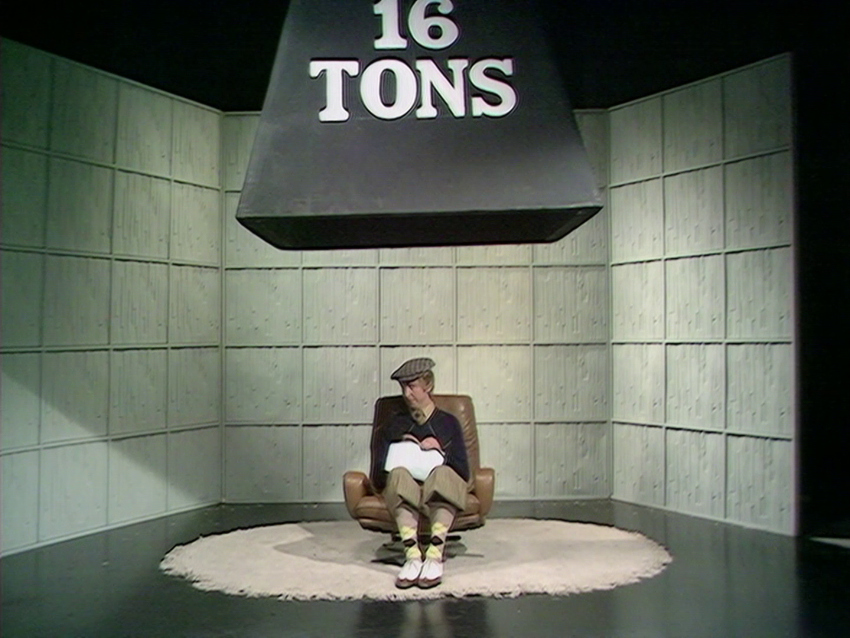
Eric Idle, about to be squashed.
All these recovered scraps underline just how precious material is from this era of the BBC. Fans of classic British television are familiar with the maddening policy of wiping tapes, erasing original content to make room for the new – thus those reconstructed Doctor Who episodes that have been pieced together from audio taped by fans off the original broadcast. Python-related projects prior to Flying Circus suffered from this treatment, including At Last the 1948 Show, Do Not Adjust Your Set, and The Complete and Utter History of Britain, all of which are available in only incomplete form on DVD. But Flying Circus survived, partly thanks to the efforts of the Pythons themselves, and what we have here has the feel of the most complete portrait of the series that’s possible, at least at the moment. Reflecting the Beatles-esque popularity of Python, each series set comes packaged with a book – not a booklet, mind you, but a substantial and lengthy book – by Andrew Pixley detailing the history and production of each episode. These are invaluable and painstakingly researched, far from a regurgitation of the usual anecdotes Python fans have heard elsewhere many times over. As with his book on the production of The Prisoner for Network’s 50th anniversary set of that show, he provides new context which answers many questions about why each episode was the way it was, including why some episodes feel more disjointed than others. I wasn’t aware of the great extent to which the scripts were taken apart and reassembled before production, so that many skits were moved to other episodes, and others written on the spot to fill gaps. But his books are also exhaustive to a fault – you’ll be grateful when Pixley explains a joke that would only make sense to someone watching the show in the U.K. in 1974; less so when he details references that need no explanation (who is this “Dracula” character anyway?), and you’ll just be scratching your head when he pulls rather mundane sentiments from the Pythons using absurdly obscure sources (I recall a 1990’s AOL chat cited at one point!). Note that these books are the main supplements to provide background for the shows; there is no retrospective documentary with the Pythons here, presumably because there’s already a variety of excellent ones already available, including 2009’s Monty Python: Almost the Truth. There are no talking heads here, and only Gilliam pops up to give the Python seal of approval, in a lengthy and delightful piece where he witnesses the results of the new restoration on a computer monitor, seeing his animations the way he always intended them to be shown. Python fans will share in his delight.
*An important note – buying the sets individually may be preferable for those who want to avoid a fragile, if attractive, box that doesn’t keep the four series sets very secure during shipping. Online forums are filled with complaints from those who received damaged boxes, with the sets, laden with a heavy accompanying book for each series, ripping through the thin dividers meant to keep them in place. I was one who received a damaged box back in November, though Network was able to replace it with an empty, intact copy. Alas, those extra supplies have been exhausted and the best one could hope for now is a refund for the damage, unless the company decides to manufacture more spares or create a sturdy version.
